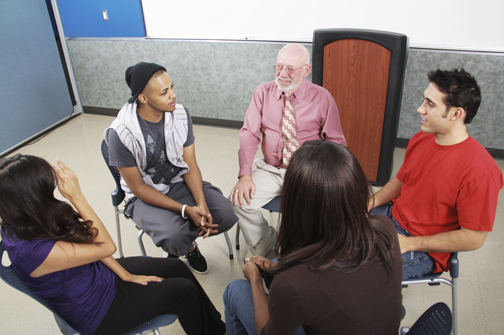Not long ago, I had an interesting talk with a colleague on the relationship between addiction treatment and the 12 Step groups. I’d been heard to remark in the past that treatment was usually the best way to get someone clean and sober, while the Step groups were often better at keeping them that way. Now I was being asked to explain.
This issue actually came up a few years earlier, around a project we did in Texas. During a casual conversation, a researcher asserted that while AA, NA, etc., may have been essential in the past, treatment of addiction had improved to the point where it could take over the role of the nonprofessional support groups. “Soon we’ll do it all,” he claimed.
I remember thinking at the time: you sure about that?
Not that we have any objection to professionally-supervised Peer Support programs — they fill an important need, especially in rural areas — but we should also take advantage of the nonprofessional options as well, where they’re available. Instead of trying to replace them.
Here’s my reasoning.
It seem to me that treatment at the higher levels – detox, rehab, partial, intensive outpatient — has several natural advantages when it comes to initiating recovery. For instance:
- It’s based on a comprehensive assessment & a formal, individualized treatment plan.
- It normally occurs in a controlled, supervised environment with safeguards for privacy and security.
- It’s conducted by qualified professionals using established protocols (& hopefully, EBPs).
- It can be monitored for lapses that could easily derail recovery.
- Treatment often promotes active involvement on the part of family and concerned persons
- A course of treatment can be designed to foster motivation and reflect different stages of change.
These features reduce the risk of an early failure, perhaps due to:
- Residual withdrawal symptoms and significant craving
- Lack of positive environmental support for recovery
- The tendency to act impulsively and take unnecessary risks
- Absence of strong internal motivation on the part of the client.
By virtue of its structure and intensity, treatment is well-suited to overcome these barriers. On the other hand, formal treatment is often:
- Time-limited, by design. In fact, the moment treatment starts, we begin planning for discharge. We continually measure client progress towards identified goals, indicative of success completion.
- Potentially burdensome, financially – particularly in view of what can happen to people’s finances during active addiction. Free and low-cost care is always at a premium, and waitlists are common.
- Subject to barriers — limited availability, scheduling problems, travel, transportation, childcare, etc.
That contrasts with certain strengths found in the mutual-help fellowships.
- No limits on participation. Best illustration: a friend’s story of finding himself in a state institution after a year in recovery. “Well,” he thought, “I guess I even failed AA.” Then it hit him: “You can’t fail AA.” No, you cannot. They”ll just tell you to keep coming back.
- No expense involved. Let me repeat that: it’s free.
- Wide accessibility. Through meetings, clubs, other gatherings. Now including the Internet. In fact, it’s one of a few truly positive contributions of the vast wasteland that is social media.
- Support and guidance from peers. That’s what sponsorship is about. Sponsor relationships often last for years, even decades. Though I have met some people who take that too far. “I was worrying about buying a new car,” one woman disclosed, “so I found this woman in my home group who understood cars and got her as a temporary sponsor for my search.” (Not sure what the Steps have to say about large retail purchasing decisions.)
- Inspiration and role models for success. This is a feature Vaillant emphasized during his research into recovery and relapse. From time to time, people lost faith in recovery and require outside inspiration. When someone stands up in meetings to speak of their own experience, strength, and hope — this is what they’re up to. The idea is that by helping others, you help yourself.
Imagine a world where everyone with a chronic illness – heart disease, diabetes, lung disease, cancer, to name just a few– had the advantage of a free, widely accessible, consistently available support network made up of former patients willing to sacrifice their own time and energy in order to reach out to those who still suffered.
Believe me, it would change healthcare — for the better.
To sum up: Where fellowships claim to work through attraction rather than promotion, treatment is the opposite: we define and pursue goals to promote healthy change, in a very purposeful way.
To me, in an ideal world, each would complement the other, not compete.












